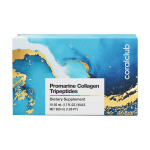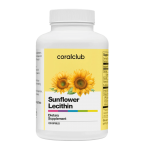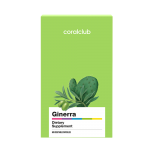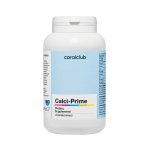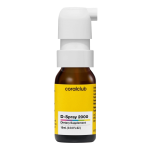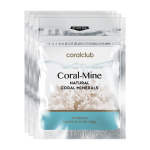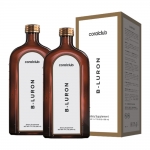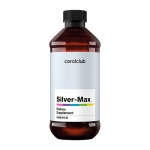 The program of restoration and preservation of health developed by the Academy of Health Coral Club International. Based on the book OA Butakova "Compendium of health programs."
The program of restoration and preservation of health developed by the Academy of Health Coral Club International. Based on the book OA Butakova "Compendium of health programs."
Nutritsiological and rehabilitation programs developed by doctors of various specialties and are based on the natural means of the highest quality.
Artichoke (Artichoke) - 1-2 capsules 2 times a day. Has choleretic, diuretic and diaphoretic action, including other system detoxification.
Lucerne (Alfalfa) - 2 tablets 2 times a day with meals. The drug has a complete protein and mineral composition, improves skin nutrition, prevents aging.
Selenium (Selenium) - 1 tablet 1-2 times a day between meals. To improve the depuration of toxic substances, improving immunity, protecting skin cells from free radicals.
Balm for the face and body, "emu oil with tea tree oil" (Emu oil with Tea Tree oil) - applied to the damaged surface several times a day. He was fat (Emu oil) - It is a powerful moisturizer and skin regenerator.
Coral Mine (Coral-Mine), Coral water, coral calcium - one bag to throw in a glass enclosed vessel with a capacity of 1.5 - 2 liters of drinking for 15-20 minutes before meals and 1 - 1.5 hours after eating. Drink during the day. You can drink capsules, tablets and powders. Aimed at maintaining optimal body water balance. Has improved biological properties (low surface tension, slightly alkaline pH levels, contains about 70 essential minerals, macro-and microelements in digestible form and optimal ratios, cleaned of chlorine and toxic substances), meets the needs of the body's cells. Water has an ordered structure of atoms becomes bioavailable digestible.
The skin is a mirror of the state of health of the whole body - as the skin can identify diseases in which a person suffers. It must be remembered that prevention is always the appearance of sagging skin effectively combat it, "warned - means to win".
Human skin - this outer covering people, one of its organs, having its structure and physiology. Skin is the largest organ in our body, its mass is about three times greater than the mass of the liver (the largest organ in the body), which is 5% of total body weight.
The skin consists of three layers:
- Epidermis (epidermis, LNH; epi-+ Greek. Derma skin) surface layer of the skin consisting of stratified squamous keratinized epithelium.
- Dermis (from the Greek. Derma - skin) (corium - cutis), part of the connective tissue of the human skin (skin actually), located under the outer layer - the epidermis. Consists of two layers: the inner - and the reference surface, feeding the epidermis and its derivatives (glands, hair).
- Subcutaneous adipose tissue - the lower, the innermost layer of the skin. Thickness of fat - not the same. In the forehead and the nose is weak, on the eyelids and the skin of the scrotum completely absent on the abdomen, buttocks and soles of several centimeters. Fat layer softens the effect of various mechanical factors, provides mobility skin is thermal insulator. It contains the blood vessels, nerves, sweat glands and hair.
Functions of the skin:
- Protective function. The skin protects the body tissues from the physical, mechanical and external influences (contusions, fractures, irritation, pressure). The skin protects the body from bacterial penetration through the peculiar chemical composition of sebum and sweat, having on its surface a protective water-lipid mantle, as well as the presence of microorganisms belonging to the permanent bacterial flora and prevents pathogens. When skin trauma , colds , fatigue and body etc. impaired its ability to resist the penetration of microbes.
- Thermoregulatory function of the skin. Subcutaneous fat and sweat glands allow for regulation of body temperature , providing a constant body temperature in both summer and winter. At an elevated temperature of the outer skin muscles relax, blood vessels dilate, increasing blood flow and returns the body heat: there is copious sweat. At low temperature, skin vessels constrict, blood flow is reduced, heat is greatly reduced.
- Excretory function of the skin is carried out through the work of sweat and sebaceous glands. Amount allocated through the sweat and sebaceous glands sweat substances depends on age, the nature of power and various environmental factors.
- Immune function of the skin. Present in the skin T cells recognize endogenous and exogenous antigens, cells Largengansa deliver antigens in the lymph nodes, where they are neutralized.
- Absorption (absorptive) function of the skin. Suction capacity increases after loosening of the skin and desquamation of the horny layer of the epidermis compresses, warm baths. When lubricating the skin with fat suction capacity of the skin increases. Absorption of water and dissolved salts through the skin does not practically occur. A certain amount of water-soluble substances absorbed through the sebaceous hair follicles and through ducts of sweat glands in the absence of sweating. Fat-soluble substances are absorbed through the outer layer of skin - the epidermis. Gaseous substances (oxygen, carbon dioxide, etc.) is easily absorbed. Also easily absorbed through the skin of the individual substances, solubilizing fats (chloroform, ether) and some soluble substances therein (iodine). Most poisonous gases through the skin does not penetrate except blistering poisons - mustard gas, lewisite, and other medications are absorbed through the skin in different ways. Morphine is absorbed easily and antibiotics in small quantities.
- The skin is involved in the metabolic processes of the body. In human skin, there is an exchange of carbohydrates, proteins, fats, vitamins, salts, water exchange. These are complex processes by which the body gets the nutrients it needs. According to the intensity of water, salt and carbon exchange leather slightly inferior to the liver and muscles. Skin intensively accumulates and releases more water as compared with other organs. For example, it allocates water twice as much light. Subcutaneous tissue is a powerful storehouse of nutrients that the body uses during periods of inadequate intake of nutrients from food.
- Receptor function. In the skin are sensitive nerve endings through which we feel cold, pain, pressure, etc.
- Respiratory and gas exchange function of the skin. Skin permeation of gases and volatile liquids.
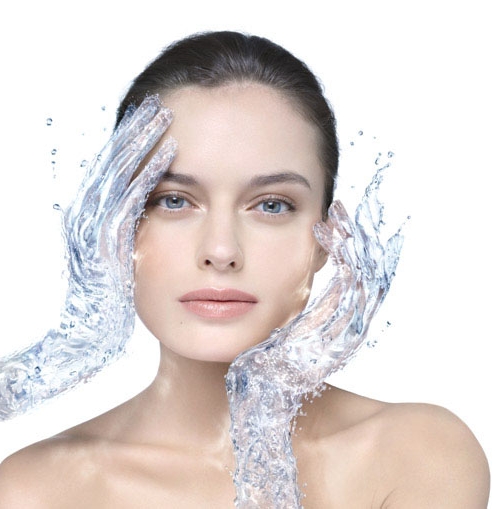
Skin types.
Types of skin - skin condition is depending on the physiological state. The basic structure of the skin Ms all people the same. Skin has inherited the ability to maintain and lose moisture. With age, skin type changes. But with the right skin care hygiene can be maintained for a long time in good condition.
Each skin type requires appropriate care. Dysfunction secretion of the sebaceous and sweat glands observed clinical picture of seborrhea, which appears excessively oily or excessively dry skin.
Easing functions of the sebaceous and sweat glands is the cause of dryness. This disease is called sebum formation reduction.
Seborrhea and sebum formation reduction - extreme cases the state water-fat envelope.
Normal skin - skin that has the hydro-lipid layer is not broken, its chemical reaction - acidic, and all matter in it are proportionate, well-balanced proportions. Normal skin usually occurs in young, healthy people.
Normal skin has a normal excretion of fat, elasticity, beautiful natural shine. It is elastic, smooth, has no wrinkles and enlarged pores. At the touch of such skin velvety-silky. She tolerates washing with water and bad weather - wind, cold, heat.
Normal skin is made up of 60% water, 30% protein and 10% fat. All substances in it are proportionate, well-balanced proportions. For horses of this type are necessary procedures supporting its state: cleansing, moisturizing, protection from UV radiation.
Oily skin - the skin, which increased function of the sebaceous glands. Oily skin occurs in boys and girls during puberty and obese people. View on oily skin is thick, dense, with a greasy luster, has large pores, comedones often resembles lemon rind. Oiliness of the skin depends on the age (adolescence - a fat, old age - more dry), the hormonal status and the presence of internal diseases, the external conditions (exposure to sun, wind, salt water, eating large amounts of fat, carbohydrates, alcohol, spices). In addition, the skin may become oily due to incorrect care.
Oiliness Estheticians considered as a disease called seborrhea.
Seborrhea - a disease entire body and not only the skin. The sebaceous glands secrete a lot of sebum anomalous chemical composition. Sebaceous gland activity is controlled by the central nervous system. Seborrhea can provoke strong stressful situation, such as for example hormonal changes associated with puberty. It is therefore particularly vulnerable are often teenagers.
Dermatologists distinguish two clinical forms of seborrhea - oily and dry.
For oily skin oily and shiny much like orange peel, only a very rough and unsightly, with extended, literally gaping pores. With the addition of microbial flora of the sebaceous glands become inflamed and acne appear.
When dry oily skin is oily, but the impression of dry and flaky. Sebum, in this case a dense and compact, moreover, it is mixed with horny scales, so the skin is not shiny.
On the way from the basal layer of the epidermis healthy cell gradually loses its core, filled with keratin protein, then it becomes completely flat. When dry seborrhea cell reaches the stratum corneum too quickly, and together with the nucleus and plasma. This disturbed the normal processes of keratinization and remove cells from the surface of the stratum corneum: cells "sticks" to it sebum, and, moreover, constantly arrive more new cells, which are also glued. "
Breaks the whole mechanism of normal metabolism in the epidermis. It involved no amino acids, urea, lipids, minerals, trace elements and other essential substances such as deoxyribonucleic acid (DNA) and ribonucleic acid (RNA). The skin becomes absolutely defenseless.
Sebum thick and contains little moisture. Skin is in constant tension and itching. One has only to touch the face as flakes immediately exfoliate accumulate on the nose, nasolabial folds and in the corners of the mouth, stuck in the eyebrows and sideburns. Additional discomfort create small but very dense and deep-seated in the excretory ducts of the sebaceous glands comedones.
Seborrhea often rapidly changes from oily to dry and back. Sometimes both seborrhea exist simultaneously, for example, on the scalp - oily seborrhea (hair shine and stick together), and facial skin - dry or vice versa.
Dry skin - skin that has reduced function of the sebaceous and sweat glands.
Externally dry skin is thin, matte, easy to fold in wrinkles, often scaly, does not tolerate washing with water and the weather. It disrupted water and fat metabolism. Chemical reaction of the skin surface often only slightly sour. Dry skin is very beautiful in her youth. However, without the proper care and feeding it wrinkled, covered with scales, blushes during stimulation and covered with age wrinkles. Healthy skin copes with moisture alone and in dry air and at low or high ambient temperature, and when exposed to corrosive chemicals, etc. To retain moisture, skin allocates special substances that are collectively called the "natural moisturizing factor". Dry skin is influenced by both internal reasons - old age, disorders of the nervous system, the extinction of gonadal function, malnutrition, heart failure, - and external, such as the frequent use of alkaline soap, alcohol, cologne, and the effect of dry hot air.
Combination skin - skin type, characterized by the presence of both fatty and dry patches, T-zone face, upper chest usually covered with oily skin, dry the remaining sections, maybe even peeling. Mixed skin requires special double strictly care for each individual site. Practically it is normal skin unevenly distributed sites greasiness.
For example, the facial skin is considered normal, but it is the eye - dry, and in the wings of the nose - greasy.

